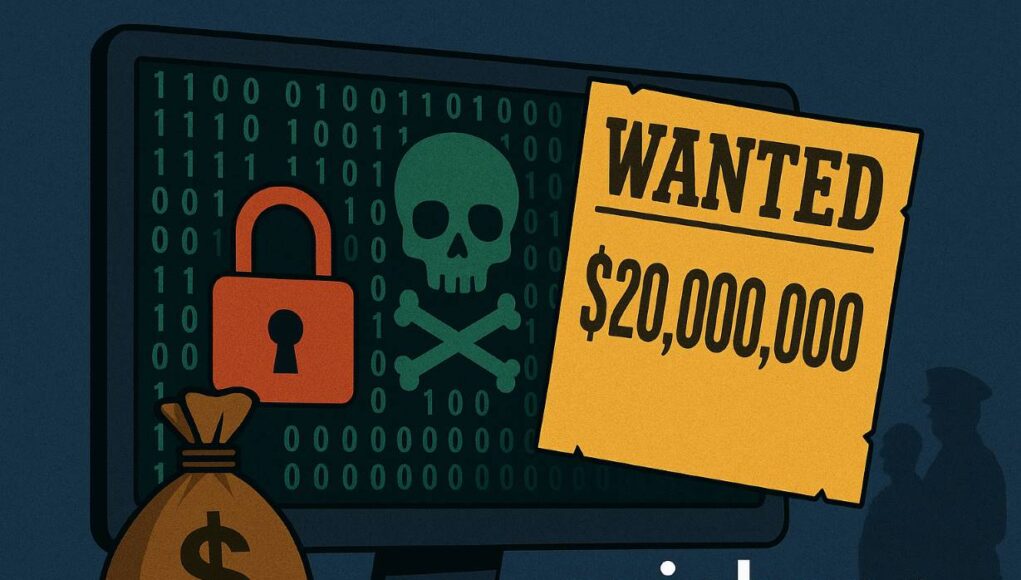Coinbase has confirmed a major cybersecurity breach that compromised sensitive customer data and internal systems. Instead of complying with the hackers’ demand for a $20 million ransom, the crypto exchange flipped the script and launched a public bounty. It now offers a reward of $20 million to anyone who can help identify and apprehend the perpetrators.
The incident occurred in late 2024 but was only publicly disclosed in May 2025. It involved the theft of portions of Coinbase’s proprietary source code and internal data. According to the company, the attackers did not steal any customer funds, but gained access through compromised employee credentials. The incident has sparked concern across the crypto sector, raising questions about insider threats and the resilience of even the most security-conscious platforms.
Update – May 21, 2025: New details have emerged about the Coinbase data breach, including insider involvement, legal fallout, and potential losses of up to $400 million. Read our latest coverage here https://crispybull.com/400m-fallout-coinbase-faces-backlash-after-data-breach/
A Bold Extortion Attempt
After infiltrating Coinbase’s systems, the threat actors reportedly demanded $20 million to prevent the release of the stolen data. Instead of entering negotiations, Coinbase refused the ransom and decided to go public. It shared details of the attack and offered a bounty of equal value to anyone providing actionable intelligence that leads to the identification or the arrest of the culprits.
The company emphasized that while customer assets remained secure, the breach represents a serious escalation in cybercriminals’ tactics targeting the digital asset industry. Coinbase said it has since taken “aggressive steps to harden infrastructure, rotate credentials, and reinforce internal security practices.”
FBI Joins Investigation
The FBI and the Department of Justice are now actively involved in the investigation. Law enforcement agencies have begun tracking the attackers’ digital footprints left behind. Officials are treating the case as a high-priority matter of cyber extortion and potential corporate espionage.
While Coinbase has not officially confirmed how the breach originated, reports from multiple sources suggest the attackers may have leveraged privileged employee access. Others have speculated on the possibility of insider involvement. If such a scenario were confirmed, that would complicate the response and heighten the need for internal auditing.
Bug Bounties vs. Ransomware
The case underscores a growing trend in which tech firms, particularly in the blockchain space, choose transparency and countermeasures over ransom payments. Coinbase’s decision to match the hackers’ demand with a bounty signals a shift in how crypto companies may tackle extortion in the future. They incentivize white-hat collaboration rather than giving in to criminal threats.
A Coinbase spokesperson stated, “We will not reward criminal behavior. Our focus is on accountability and reinforcing trust in our platform. We’re calling on the broader community to help us bring the perpetrators to justice.”
>>> Read more: Coinbase’s S&P 500 Entry Sparks Investor Enthusiasm
A Persistent Vulnerability in the Crypto Sector
While Coinbase’s response demonstrates a commitment to transparency and accountability, the broader pattern of recurring breaches in the cryptocurrency industry remains troubling. Despite ongoing investments in cybersecurity, critical vulnerabilities, whether technical or human, continue to be exploited. Until the industry moves beyond reactive measures and prioritizes structural resilience, high-profile incidents like this are likely to persist.
Readers’ frequently asked questions
How can hackers steal customer data if user funds weren’t touched?
Customer funds are typically stored in secure, segregated wallets, often with multi-signature or cold storage protection. That makes them harder to access directly. However, user data like email addresses, names, internal account identifiers, and KYC documents may reside in centralized databases. These are more vulnerable if internal systems are breached. Hackers can use this data for phishing, identity theft, or to pressure companies with ransom threats, even if they can’t drain wallets.
What exactly does a $20 million bounty mean, and who can claim it?
A bounty of this size means Coinbase is offering up to $20 million to anyone who provides verifiable information that leads to the identification, arrest, or prosecution of the individuals responsible for the breach. It’s typically open to cybersecurity experts, ethical hackers, or even third parties who may have intel. It’s not a bug bounty for fixing code, it’s a law enforcement aid mechanism aimed at tracking down the criminals.
Can this kind of breach happen on other exchanges I use?
Yes. While Coinbase is known for having some of the strongest security practices in the industry, no system is immune to social engineering, credential compromise, or insider abuse. Most large exchanges face constant attacks. The effectiveness of their defenses often depends on internal training, threat detection systems, and how quickly they respond once a breach occurs. Users should always enable 2FA, monitor for phishing attempts, and avoid storing large amounts of crypto on centralized platforms.
What Is In It For You? Action Items You Might Want to Consider
Reevaluate your exchange risk exposure
Even the most trusted platforms are vulnerable to targeted attacks. If you’re holding significant assets on a centralized exchange, consider spreading your risk. Use multiple platforms, reduce your hot wallet balances, or move some of your holdings to cold storage.
Watch for phishing attempts tied to data leaks
After any major breach, malicious actors often use stolen data to craft convincing phishing campaigns. Stay alert for suspicious emails, fake support messages, and login prompts. Enable two-factor authentication and avoid clicking unsolicited links, especially if they reference your Coinbase account.
Track regulatory and legal ripple effects
High-profile incidents like this one often draw increased scrutiny from regulators. Keep an eye on how U.S. agencies respond and whether other exchanges begin tightening their security policies. Shifts in compliance or enforcement may create trading opportunities—or new risks.











[…] >>> Read more: Coinbase Data Breach: $20M Bounty After Ransom Demand […]
[…] >>> Read more: Coinbase Data Breach: $20M Bounty After Ransom Demand […]
[…] >>> Read more: Coinbase Data Breach: $20M Bounty After Ransom Demand […]